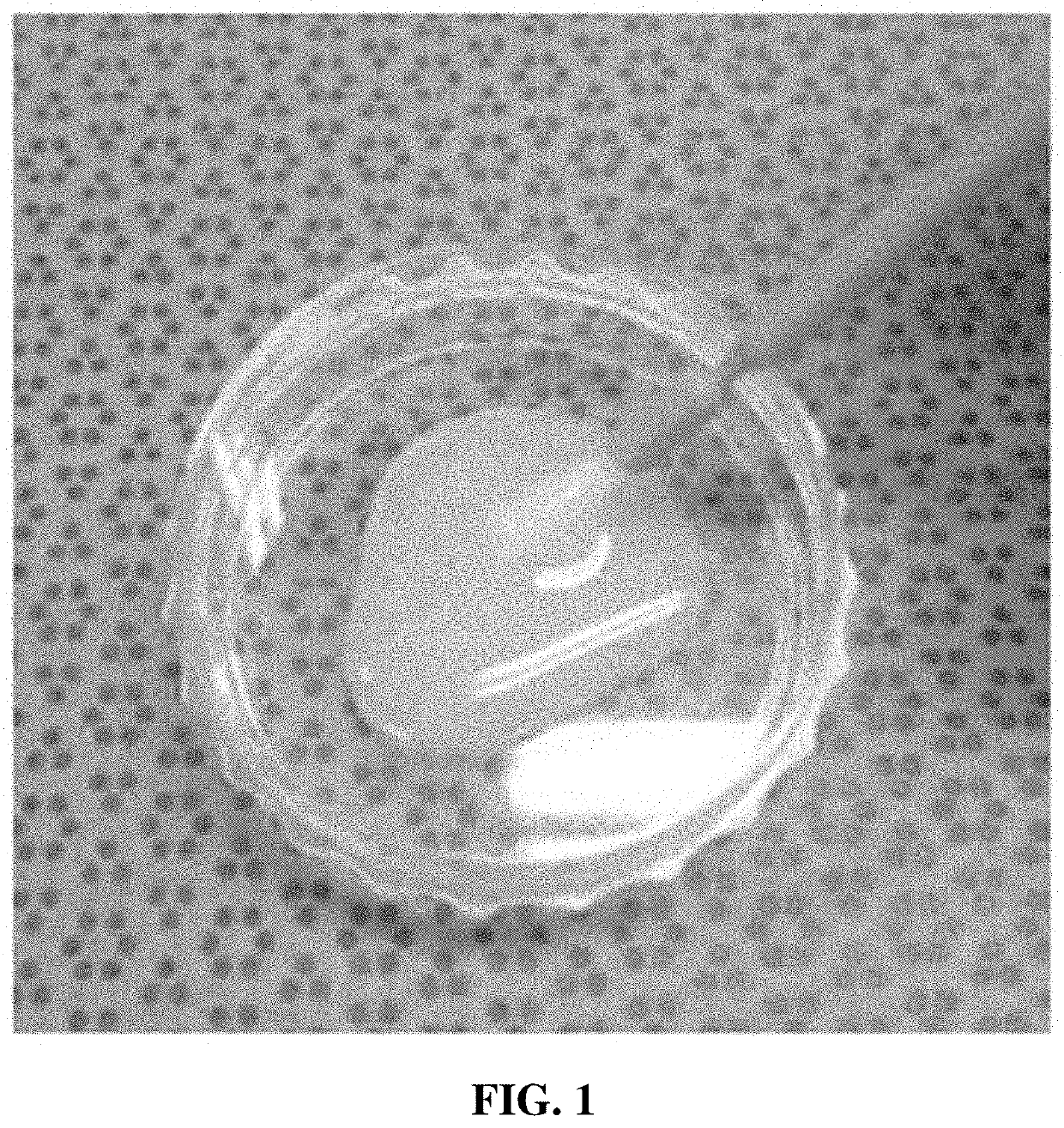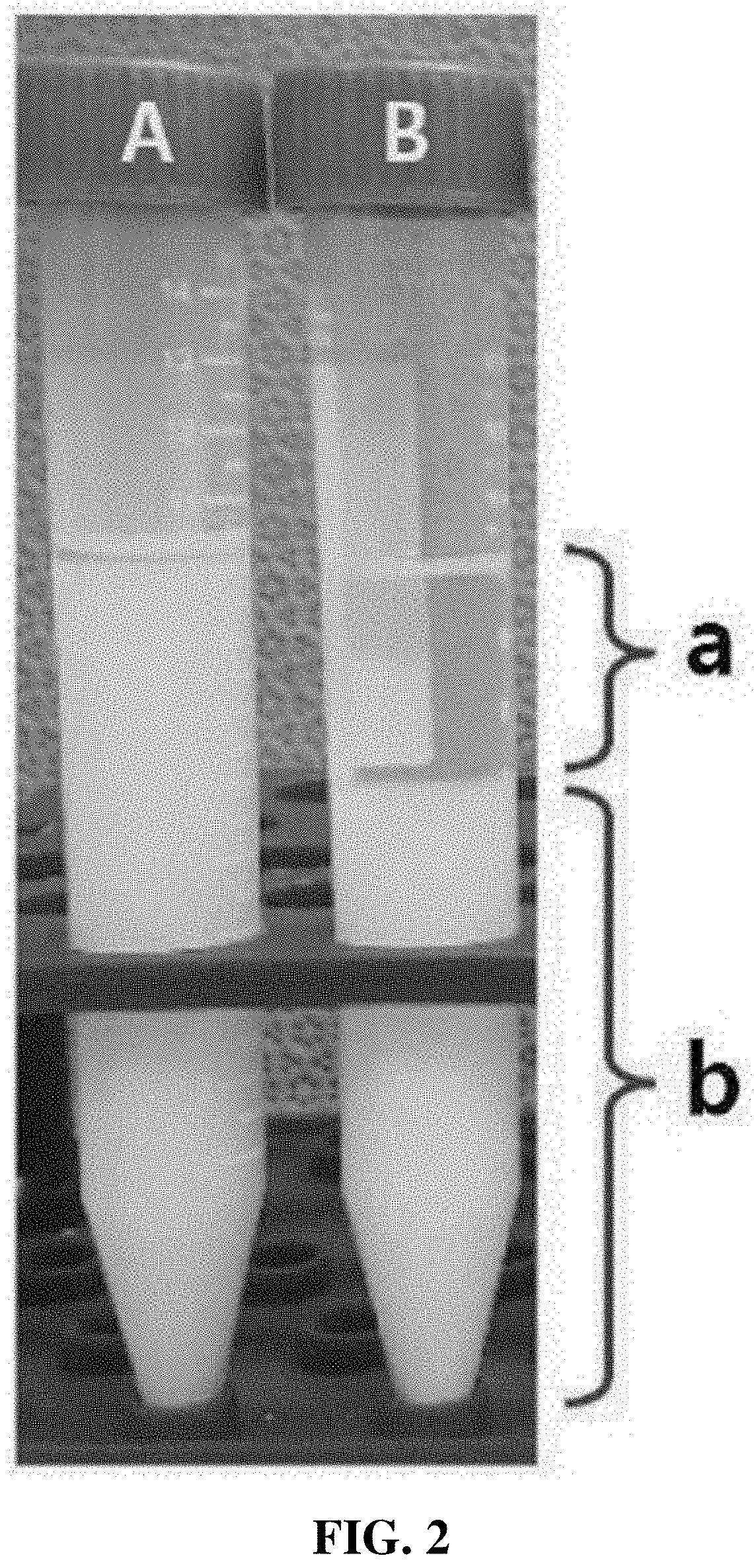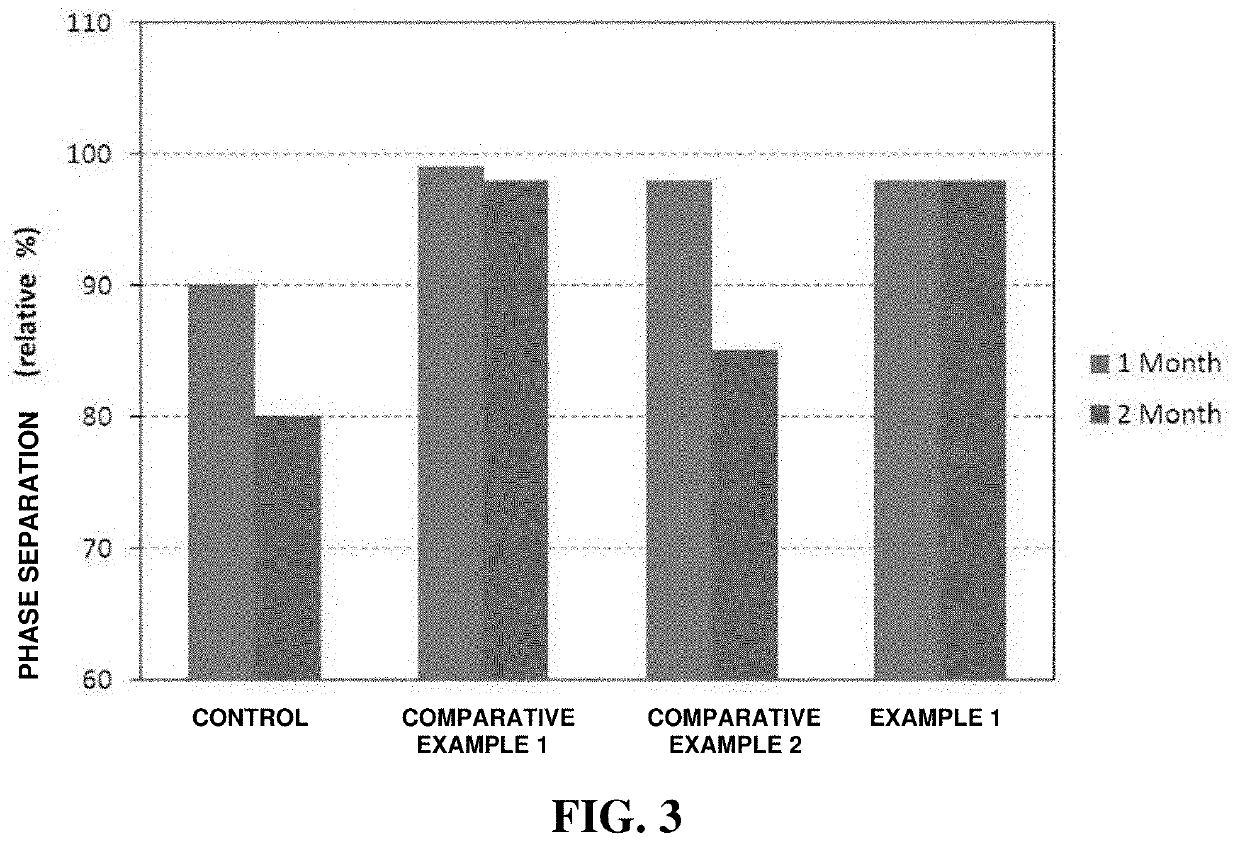Fluorine coating agent having enhanced dental tubule permeability and coating endurance and method for preparing same
a fluoride coating agent and tubule technology, applied in the field of fluoride coating agents, can solve the problems of inability to easily decompose, easy demineralization of calcium salts right under the tooth surface, and severe damage to the internal enamel containing a relatively low amount, so as to achieve enhanced adhesion between the tooth surface and the fluoride coating agent, the effect of preventing dental caries and enhancing the durability of the coating film
- Summary
- Abstract
- Description
- Claims
- Application Information
AI Technical Summary
Benefits of technology
Problems solved by technology
Method used
Image
Examples
preparation example
[0075]Preparation of Fluoride Coating Agent
[0076]First, poly(vinyl acetate) (PVAc) having weight-average molecular weights as shown in Table 1 below was dissolved in 94% ethanol while heating to 65° C. in boiling water to prepare a 30% PVAc solution (first solution).
[0077]Then, rosin was dissolved in 94% ethanol while heating to 65° C. in boiling water to prepare a 70% rosin solution (second solution).
[0078]The first solution was mixed with the second solution, a fluoride compound, casein phosphopeptide-amorphous calcium phosphate (CPP-ACP), silicon dioxide, potassium nitrate, and an emulsifier in contents as shown in Table 1 below to prepare a fluoride coating agent of Example 1 as shown in FIG. 1 and a fluoride coating agent of Comparative Example 2.
TABLE 1ComparativeClassificationExample 1Example 1Poly(vinylHigh molecular weight10—acetate)(500,000)Low molecular—20weight (80,000)Hydrogenated rosin3030Fluoride compound (NaF)55ActiveCPP-ACP1.51.5ingredientsSilicon dioxide11Potassium...
experimental example 1
[0079]Phase Separation Phenomenon According to Emulsifier Condition
[0080]1) Observation of Phase Separation Phenomenon According to Presence or Absence of Emulsifier
[0081]First, in order to confirm a phase separation phenomenon according to the presence or absence of an emulsifier, a control (B) was prepared in the same manner as in Example 1 (A) of the preparation example except that a solvent was further included instead of an emulsifier.
[0082]10 ml each of Example 1 (A) and the control (B) was introduced into respective conical tubes and maintained at room temperature for 45 days, and then whether phase separation occurred was observed.
[0083]As shown in FIG. 2, after 45 days, in the case of Example 1 (A) including an emulsifier, it can be seen that almost no phase separation was observed. On the other hand, in the case of the control (B) including no emulsifier, it can be seen that a supernatant (a) and a precipitate (b), in which poly(vinyl acetate) which is a polymer, hydrogena...
experimental example 2
[0092]Thickness of Coating Film According to Viscosity of Fluoride Coating Agent
[0093]While adjusting the viscosity of the fluoride coating agent by further adding a solvent to Example 1, the thickness of a coating film was confirmed according to the viscosity.
[0094]In this case, the viscosity of the fluoride coating agent was measured by collecting 1 cc of individual agents using a viscometer (microVISC viscometer, RheoSense Inc., USA)
[0095]The coating thickness was measured using a scanning electron microscope (SEM) image. A discomfort experiment was performed by forming coating films using the fluoride coating agent on the teeth of 10 subjects to be treated and then observing whether the subjects feel discomfort (feeling discomfort: O / feeling no discomfort: X).
TABLE 2Viscosity (cP)~200 800~1,5003,000~5,000Coating5~1030thickness(um)DiscomfortXX◯AbrasionHighly likelyLess likelyHighly unlikelyresistanceto be removedto be removedto be removedby externalby externalby externalstress du...
PUM
 Login to View More
Login to View More Abstract
Description
Claims
Application Information
 Login to View More
Login to View More - R&D
- Intellectual Property
- Life Sciences
- Materials
- Tech Scout
- Unparalleled Data Quality
- Higher Quality Content
- 60% Fewer Hallucinations
Browse by: Latest US Patents, China's latest patents, Technical Efficacy Thesaurus, Application Domain, Technology Topic, Popular Technical Reports.
© 2025 PatSnap. All rights reserved.Legal|Privacy policy|Modern Slavery Act Transparency Statement|Sitemap|About US| Contact US: help@patsnap.com



